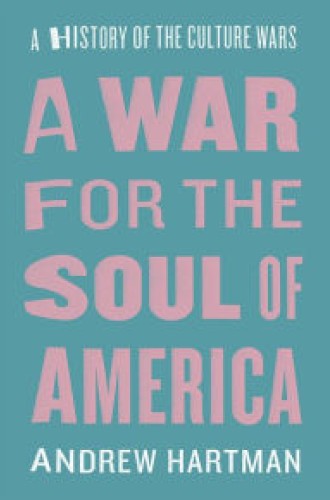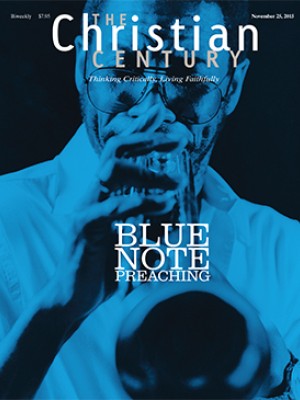Culture war fatigue?
It pays to recall that American conservatives once regarded Lynne Cheney as at least as important a guardian of national security as her husband, the redoubtable Dick. During her tenure as chair of the National Endowment for the Humanities, George Will named her the “secretary of domestic defense.” He continued: “The foreign adversaries her husband, Dick, must keep at bay are less dangerous, in the long run, than the domestic forces with which she must deal.”
The context for this encomium was, of course, the culture wars—the fierce battle over the ethical well-being of the republic in which Lynne Cheney was a leading commander of the forces of moral certainty, bourgeois domesticity, and feel-good Americanism. The early 1990s was a particularly intense period in these conflicts, and many people at the time shared the conviction of erstwhile presidential candidate Patrick Buchanan that the struggle against feminism, homosexuality, multiculturalism, atheism, ethical relativism, pornography, feel-bad anti-Americanism, and other maladies afflicting the culture had become “a war for the soul of America.”
Read our latest issue or browse back issues.
Andrew Hartman’s book is the first to tell the story of this war in all its diversity. He ranges widely over its many battlefields in the 1980s and 1990s, from struggles over the identity politics of African-Americans, Chicanos, feminists, and gay rights activists, to controversies over sex and violence in mass culture, to contests over interpretation of the American past. His account of debates in education is particularly acute, addressing struggles over school prayer, sex education, Darwinian evolution, national standards, university humanities curricula, and campus speech codes. Readers of a certain age will be reminded, often painfully, of arguments that raged over Charles Murray and Richard Herrnstein’s book The Bell Curve (1994), Spike Lee’s film Do the Right Thing (1989), the Supreme Court nomination of Robert Bork (1987), Tipper Gore’s assault on explicit lyrics in popular music (1985), N.W.A’s “Fuck tha Police” (1988), the National History Standards (1994), the Smithsonian Enola Gay exhibition (1994), Allan Bloom’s The Closing of the American Mind (1987—“the culture wars’ über text”), and much more.
Some have dismissed the culture wars as a sideshow or, even worse, an instance of the false consciousness of working-class cultural conservatives who are manipulated by right-wing populists and thereby made blind to their economic class interests. Hartman, to his credit, insists that the issues at stake in cultural politics are “real and compelling.”
Hartman argues that the origins of the culture wars lie in the revolt of the New Left in the 1960s. (He defines the New Left broadly to include the antiwar movement; campus radicalism; Black, Brown, and Red Power advocacy; feminism; and gay liberation.) He writes:
The sixties gave birth to a new America, a nation more open to new peoples, new ideas, new norms, and new, if conflicting, articulations of America itself. This fact, more than anything else, helps explain why in the wake of the sixties the national culture grew more divided than it had been in any period since the Civil War. Americans split over how to think about this new America. The gulf that separated those who embraced the new America from those who viewed it ominously—those who looked to nurture it versus those who sought to roll it back—drew the boundaries of the culture wars.
In the early 1970s neoconservatives—Irving Kristol, Gertrude Himmelfarb, Midge Decter, Norman Podhoretz, Daniel Moynihan, and others—forged the cutting edge of the anti-’60s backlash, which recoiled from affirmative action, campus radicalism, feminism, black identity politics, and other manifestations of late ’60s “adversary culture.” In 1970 Moynihan alerted his boss, Richard Nixon, that “there is a struggle going on in this country of the kind the Germans used to call a Kulturkampf. The adversary culture which dominates almost all channels of information transfer and opinion formation has never been stronger, and as best I can tell it has come near silencing the representatives of traditional America.”
Over the course of the 1970s the neoconservatives (most of them Jews and Catholics) were joined by conservative Protestant evangelicals—“the demographic bedrock of the conservative culture wars”—who were upset about such divisive matters as sex education, busing, feminism, and abortion. By the time of Ronald Reagan’s election, the two groups had formed a formidable, if not always happy, coalition that fought fiercely to neutralize the soul-destroying “acids of modernity.”
Generally speaking, Hartman follows convention in lining up his antagonists along liberal-conservative, left-right lines. His affections clearly rest with the liberals, but he is generally nonpolemical in his accounts of the two sides. Conservatives, he says, were defenders of what he terms “normative America”—defenders of norms that, as he sees it, prevailed in American culture with little dissent until the 1960s: “hard work, personal responsibility, individual merit, delayed gratification, social mobility, and other values that middle-class whites recognized as their own.” Normative Americans formed families marked by clearly defined gender roles, confined sex to the marriage bed, and celebrated the exceptional virtues of the United States. Although liberals did not necessarily set themselves against all of these norms, they ventured to displace many of them—above all, perhaps, that of delayed gratification.
However, Hartman is too good a historian to overlook the failure of a strict liberal-conservative dichotomy to capture some of the complications of the culture wars. He usefully devotes full and sympathetic attention to figures such as Henry Louis Gates and Camille Paglia, whose views challenged conventional thinking on both sides; he pays less full and sympathetic attention to others, such as William Julius Wilson and Christopher Lasch, whom I would say did the same. He also notes some of the strange alliances the culture wars occasioned, such as that between antipornography feminists like Andrea Dworkin and Catharine MacKinnon and antipornography conservatives like William F. Buckley. Finally, he points up significant divides within the left and the right, including those occasioned by identity politics among liberals and by national curriculum standards among conservatives.
All historians confront the sometimes difficult question of when to begin and when to end a story. An argument is in order in each case, and neither of Hartman’s arguments is persuasive. He embraces the long-established presumption of a sharp cultural divide between the 1950s (1946–1963) and the 1960s (1964–1974).
Other historians have been challenging this convention for a number of years, arguing that although the “normative America” of the 1950s was well established, it had begun to wage a losing battle against a transformation of values quietly at work in private behavior. As the late historian Alan Petigny said, it is time to restore greater continuity to the postwar period and call into question the view that the 1950s was “a bygone world of crew cuts and manicured lawns.” What distinguished the 1960s was that the transformation of values became public and noisy. A significant number of Americans then called for a “renormalization” of the moral order, and they were met in the 1970s by a public and noisy opposition. A mostly covert cultural war became overt.
Hartman concludes his book abruptly and startlingly. He asserts that the culture wars ended, or at least became irrelevant, by the last years of the 1990s. “The logic of the culture wars has been exhausted,” he writes. “The metaphor has run its course.” This is nonsense.
To be sure, some fronts in the war have closed down. For example, as Hartman rightly says, “in the 1980s conservatives like William Bennett criticized the academic left on the grounds that it had destroyed the humanities with its newfangled relativistic theories. Today, in contrast, the national discussion is about whether the humanities are worth supporting at all.” But surely the war rages on. About this, if little else, Donald Trump is correct.
We are thus deprived of the rich account of the battles of the last 15 years that Hartman could undoubtedly have provided. One wonders, for example, what he would make of the legalization of gay marriage. A triumph for the left, many would say. But maybe it’s not. It’s certainly a victory for monogamous marriage, which one gay rights activist described in 1987 as “a spawning ground of lies, betrayals, mediocrity, hypocrisy, and violence.”
Hartman rightly says that the left had greater success in the culture wars than in other political conflicts of the 1980s and 1990s. But I think the victories of the left have secured not so much a “renormalized” public culture as a “denormalized” public culture—that is, they have led to the emergence of a peculiar moral order in which the shared values of American citizens have thinned out to the point of evaporation. The most resounding victory of the left has been a victory for not-sharing. Call it tolerance or, more critically, indifference. What we have now is not a new singular “normative America,” but a new plurality of “normative Americas” in which each of us is largely free to go our own way.
For example, we have argued among ourselves about the norms that should guide the curriculum of public schools. In this arena, as Hartman shows well, left and right have fought fierce contests, and they continue to do so. In the course of those contests, an alternative to cultural warfare has emerged: abandonment of the whole project of a common public education that is guided by shared norms. Battles over public space can be converted into nonconflicting choices of private space that are often well served by markets. Here parties avoid defeat by disengaging and by insulating themselves from what they find disagreeable. If your local middle school introduces a sex education program you find offensive, don’t fight it, homeschool instead. Hartman explains the upshot of this movement out of the public schools: “Whereas the de facto national curriculum remained liberal, only a shrinking percentage of the nation’s schoolchildren were exposed to it.”
Culture, as Freud taught us, is all about interdictions we impose on one another. A democratic culture is one in which individuals freely impose these interdictions. But we have developed a neoliberal culture in which all such shared interdictions are suspect. As Andrew Bacevich nicely puts it, “The people of ‘thou shall not’ have long since become the people of ‘whatever,’ with obligations deriving from moral tradition subordinated to claims of individual autonomy.”
Can we survive as a whatever people? If we can, should we? What would hold together an entirely whatever America? How thin a shared culture is too thin for us to abide? These are perhaps the most troubling questions raised by the culture wars, and liberals should be no less troubled by them than conservatives are.






